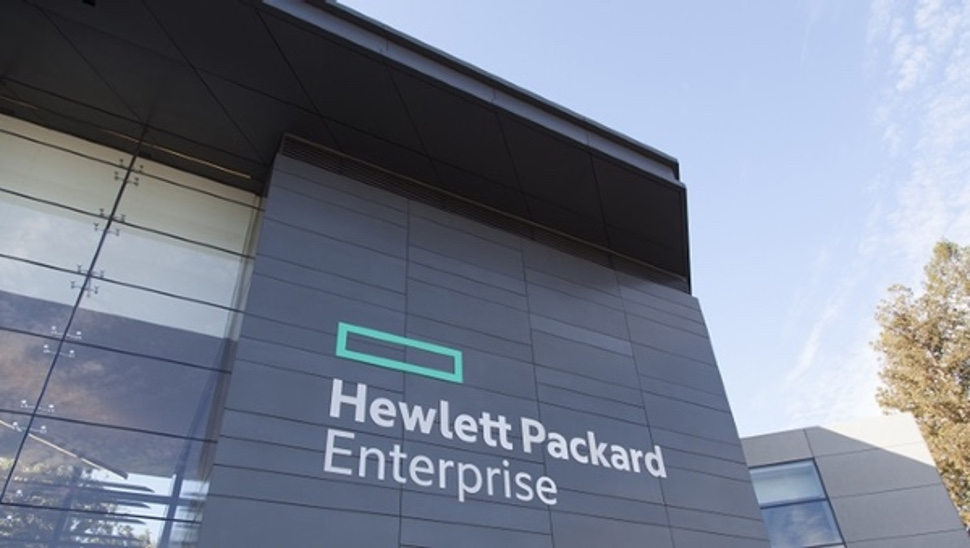HPE offers operators consumption-based 5G core
The future is consumption-based and converged, according to HPE

Hewlett Packard Enterprise (HPE) is making a major play for the 5G market, claiming its cloud networking services will allow operators to adopt a consumption-based model and free themselves from the grip of traditional equipment manufacturers.
The company plans to offer all of its products on a consumption basis by 2021 as part of its ‘Greenlake’ portfolio and is extending this commitment to its telecommunications range.
More than 5,000 staff work on HPE’s telco business and it has existing relationships with 300 operators in 160 countries.
- UK 5G speeds slower than rest of world
- 5G in the UK: everything you need to know
- Operators reach £1bn shared rural network deal
Consumption-based 5G
HPE now wants to expand its telco software portfolio at a time when operators must cope with the technical and financial challenges that come with 5G investments. The consumption-based model allows customers to shift away from a capital-intensive strategy.
“[This announcement] shows the strength of our business [in the UK] and the strength of our telecommunications division,” said Marc Waters, HPE’s MD for UK, Ireland and the Middle East. “In this market we bring genuine IP, a commitment to open standards and collaboration, and more importantly a services capability that wraps around [the products]."
“The ability to offer telco solutions as a consumption-based model, when you consider how business cases are built, is truly differentiated,” he added.
Of course, the business case is only part of the equation and HPE believes its technical capabilities are more than a match for existing players like Ericsson, Nokia and Huawei. While the ‘big three’ will continue to hoover up the market for radio kit, HPE will look to compete with them and Cisco in the core and edge layers of the network.
Sign up to the TechRadar Pro newsletter to get all the top news, opinion, features and guidance your business needs to succeed!
The company believes the open standards and spirit of interoperability that has characterised 5G development to date means operators are looking to adopt best-of-breed product for their infrastructure. HPE has more than 50 5G projects, ranging from small innovations and proof of concepts (PoCs) to more complicated endeavours.
“Not a lot of people know the full extent of what we do [in telecoms],” said Phillip Mottram, HPE’s Head of Communications and Media Solutions. “Previous generations of standards were built for the Network Equipment Providers (NEPs) like Ericsson, Huawei and Nokia and they positioned [each new generation] as an upgrade to operators."
“When it came to 5G, operators realised it was an opportunity to break the stranglehold of the NEPs and make standards more open. The idea was you could mix and match from different suppliers.”
“HPE can give you a viable alternative to what you can get from the NEPs and pre-package it for you and charge it on a consumption basis.”
New technologies
Headlining the announcements is the HPE 5G Core Stack, a cloud-based core network model that makes it easier to roll out new services at a lower cost.
These capabilities will support the new business applications that rely on ultrafast speeds and ultra-low latencies enabled by edge computing. HPE will support edge deployments with vRAN and Multi-access Edge Computing (MEC).
The edge will also be supported by new capabilities for HPE’s Aruba networking portfolio. There are currently 16.5 million Aruba hotspots and small radios globally, a footprint that will allow enterprises to offload traffic to local networks and facilitate convergence.
Aruba Air Slice will deliver network slicing capabilities to hotspots, allowing organisations to prioritise certain traffic. For example, a conference call would be given priority over a football stream. Network slicing is one of the most valued capabilities of 5G technology and AirSlice ensures such functionality is maintained regardless of connection method.
Meanwhile, Aruba Air Pass will seamlessly hand over traffic from 5G to a Wi-Fi network. This feature could be used in conjunction with a priority list or to ensure that mission critical applications are connected in complex indoor deployments.
Although predominantly enterprise products, both could be used by mobile operators to densify their infrastructure in urban and indoor environments, and offer converged networking services to customers. The arrival of Wi-Fi 6 as a complement to 5G will accelerate this shift.
“We have this convergence in the enterprise and telco space,” added Mottram. “Wi-Fi and 5G are coming together in terms of standards and technologies.”
HPE plans to offer the 5G Core Stack in the second half of this year and is in conversations with more than 50 operators regarding potential deployments.
- Here are the best 5G phone deals of 2020
Steve McCaskill is TechRadar Pro's resident mobile industry expert, covering all aspects of the UK and global news, from operators to service providers and everything in between. He is a former editor of Silicon UK and journalist with over a decade's experience in the technology industry, writing about technology, in particular, telecoms, mobile and sports tech, sports, video games and media.